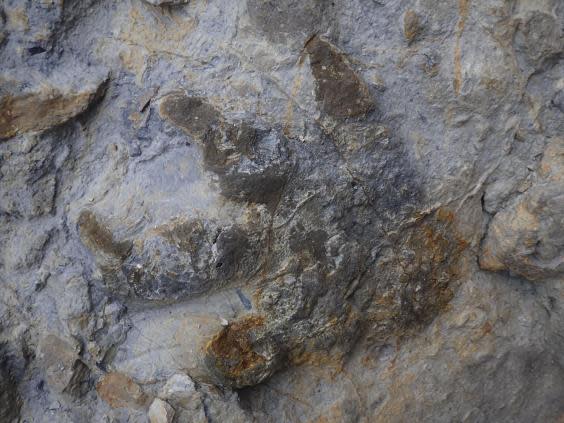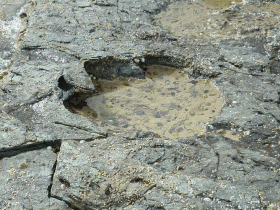‘Treasure trove’ of dinosaur footprints revealed after storms destroy Sussex cliffs
Violent storm surges along the Sussex coast have revealed a wealth of dinosaur footprints after sections of the sandstone cliffs collapsed.
Prints belonging to iconic creatures including a species of stegosaur, the armoured ankylosaurus and predatory theropod dinosaurs were all discovered at the site near Hastings.
The team said the “treasure trove” provided a rare insight into the lives of the ancient beasts and how they interacted with each other.
Dating to about 100 million years ago during the Cretaceous period, the footprints’ location would once have been a water source rich in sticky mud that allowed for detailed preservation.
“Whole body fossils of dinosaurs are incredibly rare,” said Anthony Shillito, a PhD student at the University of Cambridge who led the study.
Read more
Dinosaur footprints from 170 million-years ago discovered in Scotland
“Usually you only get small pieces, which don’t tell you a lot about how that dinosaur may have lived.
“A collection of footprints like this helps you fill in some of the gaps and infer things about which dinosaurs were living in the same place at the same time.”
More than 85 well-preserved prints emerged over four winters as storms battered the cliffs, including the best specimens to be found in the region for decades.

“As well as the large abundance and diversity of these prints, we also see absolutely incredible detail,” said Mr Shillito, who published his findings in the journal Palaeogeography, Palaeoclimatology, Palaeoecology.
“You can clearly see the texture of the skin and scales, as well as four-toed claw marks, which are extremely rare.”
As part of his research, Mr Shillito is investigating how dinosaurs acted as environmental “engineers” in these ancient floodplains, shaping the landscape with their massive bodies.
Today large animals like hippopotamuses and cows affect water flow by creating channels as they move through mud, and the Sussex footprints suggest dinosaurs did the same thing millions of years earlier.
Read more
Dinosaur footprints mistakenly thrown into lake by tourists
The Hastings region is known for its rich seams of dinosaur fossils, including the first known iguanodon, discovered there in 1825, and the first confirmed example of fossilised dinosaur brain tissue in 2016.
There are likely more footprints waiting to be discovered within the cliffs, but improved sea defences in the area mean many of them will probably stay locked in the rock as they are now protected from surges.

 Yahoo News
Yahoo News 

